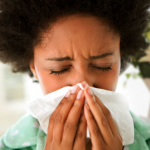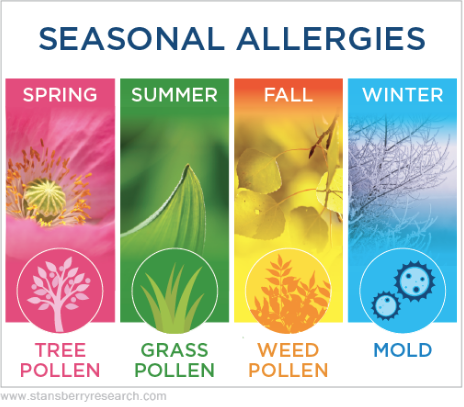
y Linda Tate, Communications Director, Northwest Osteopathic Medical Foundation
I don’t know about the rest of you, but between my eyes and my nose, I’m constantly itching my face during a time when I shouldn’t be touching my face at all, per COVID19 guidelines, but when the itch hits…it must be scratched, right?
I’ve never had this much trouble with seasonal allergies before, so I wanted to do some research to find out what in the sam hill is going on here?!
The first question I had was, “where do the following states rank in order of high pollen counts: Alaska, Idaho, Montana, Oregon, and Washington State?” Why just those states? Well, because those states are the ones that the Northwest Osteopathic Medical Foundation serves. In other words, y’all are my bosses.
Of course there are no statistics for 2020 yet, so we will be looking back at 2019. Given the current viral circumstances, I’m sure many of us would be more than happy to revisit 2019, am I right?
We went to the experts…the Asthma and Allergy Foundation of America (AAFA). According to the AAFA, for 2019 we ranked as follows: Seattle Washington ranked better than average, as did Portland Oregon, Boise Idaho, and Spokane Washington. Of interest is that both Montana and Alaska weren’t ranked at all.
Since my nose didn’t agree with this ranking of “better than average” (and I hate to know what the horrific states are like to live in during this season) I then pointed my attention to The American Academy of Allergy Asthma and Immunology.
As of June 22, 2020, Eugene Oregon, Coeur d’Alene Idaho, Missoula Montana, and Seattle Washinton, all report that the grass pollen is red hot “high”. So there’s our culprit. Grass. Additionally, Fairbanks Alaska reports very little pollen issues across the board.
Note to self: Retire in Alaska.
Now that we understand what it is that is causing us to itch our skin off of our faces, let’s see what we can do about it, shall we?
For this information we shall travel back to the AAFA. Here are their recommendations:

Protect Yourself from Pollen
Spring allergy season begins with pollens released by trees, then grass later in spring. There are apps you can use to watch your area’s pollen counts. On days that pollen is high for the trees or
grass you are allergic to, take these actions to reduce your pollen exposure:
• Limit outdoor activities
• Keep windows closed
• Use central air conditioning with HEPA air filtration
• Wear sunglasses when outdoors
• Wear a hat to cover your hair
• Take a shower and shampoo hair before going to bed
• Change and wash clothes after outdoor activities
• Dry laundry in a clothes dryer, not on an outdoor line
• Limit contact with pets that spend time outdoors
• Wipe pets off with a towel before they enter your home
• Remove your shoes before entering your home
• Wash bedding in hot, soapy water once a week
• Use a nasal rinse to flush out inhaled pollen
• Use a CERTIFIED asthma & allergy friendly® air cleaner (portable or whole house) or HVAC air filter
There are also options available to prevent or treat allergy symptoms:
• Allergy medicines – some work best if taken before allergy season begins
• Immunotherapy – shots or tablets available as a long-term treatment. It can help prevent
or reduce the severity of reactions
Talk with your doctor before allergy season begins to discuss which treatment is right for you. Now is a good time to book your appointment for the end of summer before the fall allergy season begins”.
So, dear readers, there you have it. Our options are many, and if you are like me and this list appears to be too long and cumbersome, then I suggest you contact a realtor in Alaska, because seasonal allergies are here to stay.
Happy itching and we will see you back here next Wednesday. Until then, take care of yourself and each other.

This blog should not be considered to be medical advice. Your personal health is best discussed one-on-one with your personal physician. Rather, this blog is intended to highlight the distinctive philosophy and practice of osteopathic medicine as expressed by the author and does not necessarily represent the opinion of the Northwest Osteopathic Medical Foundation, or other Osteopathic physicians. The information and opinions are solely those of the author. For more information, go to www.nwosteo.org.


